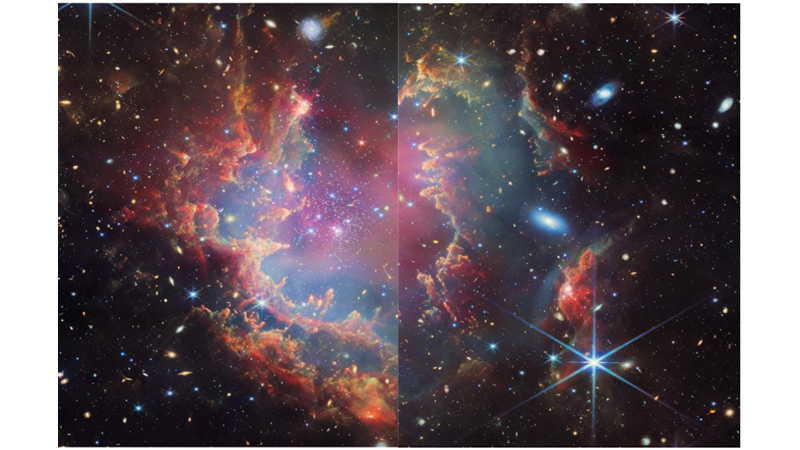Meet NGC 602, a cluster of young stars in the Small Magellanic Cloud, one of the first places astronomers using NASAWebb found candidates for brown dwarfs outside our galaxy. NGC 602 in this galaxy, one of our satellites, presents an environment that resembles the star-forming regions of the early universe, with very few elements heavier than hydrogen and helium. This cluster, which is quite different from our own solar neighborhood, is also close enough for detailed observations.
Brown dwarfs are neither stars nor gas giant planets. They usually range in mass from 13 to 75 Jupiter masses. Some are free-roaming and may not be bound to the star like a planet. However, they share some characteristics with exoplanets, such as their atmospheric structure and storm patterns.
NASA Hubble has revealed that NGC 602 is home to very young, low-mass stars, while Webb reveals that objects like brown dwarfs are important and frequent in this cluster. Scientists are excited to have the opportunity to better understand how such objects form, especially in harsh conditions similar to the early universe.
Image description:
Two images of a star cluster are shown inside a large nebula of multicolored gas and dust. The material forms dark ridges and hills of gas and dust surrounding the cluster, their interiors lit up, while diffuse, translucent cloud layers cover them. Around and within the gas can be seen numerous distant galaxies, some of them quite massive, as well as a few very large and bright stars closer to us.
Image Credits: ESA/Webb, NASA & CSA, P. Zeidler, E. Sabbi, A. Nota, M. Zamani (ESA/Webb)


 Nielawore
Nielawore









Yorumlar
Really nice
Yorum yazmak için lütfen giriş yapınız